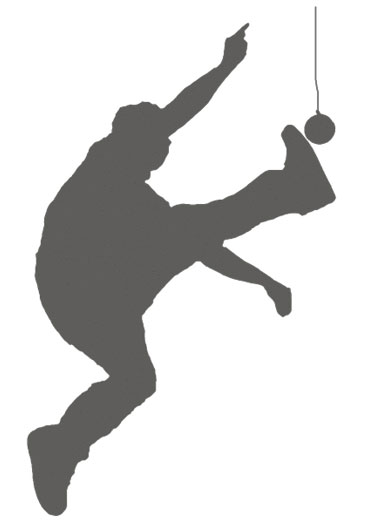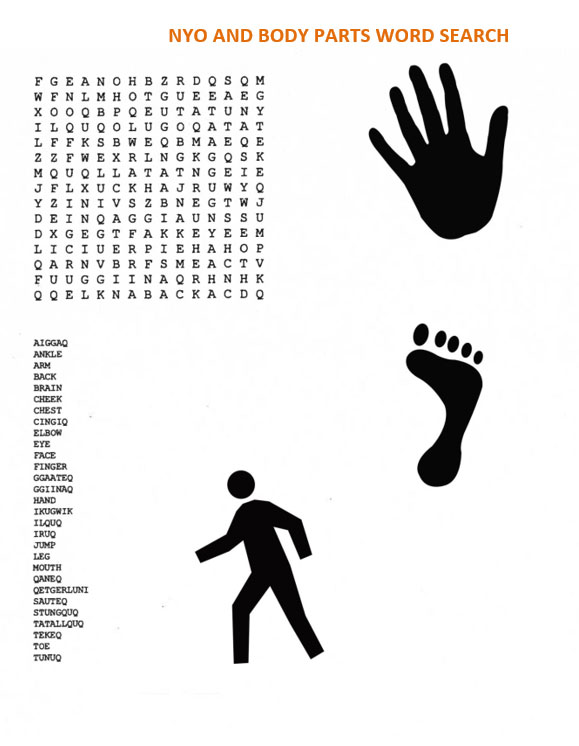Unit 5: Physical Science Principles in Everyday Life – The Games
Every day, we interact with different forms of energy and matter.
Lesson Plan 1 “What Goes Up, Must Come Down – NYOs”

Summary: Students will learn about the basics of gravity and force. Students will examine what the Alaska Native Games are and practice some of them. Students will also measure the forces and results of these practices, and think about what forces are affecting each activity.
Grade Level:
K-4 / 5-8 / 9-12
Time Required:
Five to seven class periods of 45 minutes
Materials Needed:
• Measuring devices (rulers, tape measure, scale, GPS)
• Science Journals
• Butcher Paper
• Markers
• Computers with Internet access
• Camera
• Video camera
• NYO games equipment
• Games of the North DVD
Learning Objectives:
• Students will learn about the Native Youth Olympic (NYO) games.
• Students will understand that forces of nature affect the activities in the NYO games.
Vocabulary introduced:
Gravity, motion, force, change, constancy, measurement, energy, friction, chemical energy, potential energy and kinetic energy.
National Science Education Standards:
Physical Science
Content Standard B: As a result of the activities in grades K-4, all students should develop an understanding of the following:
• Properties of objects and materials
• Position and motion of objects
• Light, heat, electricity, and magnetism
Content Standard B: As a result of their activities in grades 5-8, all students should develop an understanding of the following:
• Properties and changes of properties in matter
• Motions and forces
• Transfer of energy
Content Standard B: As a result of their activities in grades 9-12, all students should develop an understanding of the following:
• Structure of atoms
• Structure of properties of matter
• Chemical reactions
• Motions and forces
• Conservation of energy and increase in disorder
• Interactions of energy and matter
Alaska State Standards:
Concepts of Physical Science
A student should understand and be able to apply the concepts, models, theories, universal principles, and facts that explain the physical world.
A student who meets the content standard should be able to develop the following:
• An understanding of the characteristic properties of matter and the relationship of these properties to their structure and behavior;
• An understanding that energy appears in different forms, can be transformed from one form to another, can be transferred or moved from one place or system to another, may be unavailable for use, and is ultimately conserved;
• An understanding of the interactions between matter and energy, including physical, chemical, and nuclear changes, and the effects of these interactions on physical systems; and
• An understanding of motions, forces, their characteristics and relationships, and natural forces and their effects.
Background Information:
Become familiar with the Native Youth Olympic (NYO) games and understand the history of the activities to appreciate the cultural importance of continuing to encourage students to learn them.
Find out who the coaches have been in the past in your community as well as past athletes that have participated in NYO or the World Eskimo-Indian Olympic games.
Meet the community members prior to their visit to the classroom so they understand what you would like them to share and let them become familiar with the classroom.
Have water or tea for the guest demonstrator to drink during their visit to the classroom/gym.
Review social expectations with the class prior to the guest speaker (sitting respectfully listening, waiting until the speaker has finished talking before asking questions, offering assistance/escorting when the speaker is leaving).
Have a small gift of thanks for the guest (something made by the class, or a card, and follow with a letter from the students).
 Listen to the Audio: Interview with Melanee Stevens from Qutekcak Native Tribe, 2011.
Listen to the Audio: Interview with Melanee Stevens from Qutekcak Native Tribe, 2011.
Resources: Alutiiq words
Body Parts and Related Terms
| Ankle | cingiq |
| Arm | sauteq |
| Armpit | uneq |
| Back | tunuq |
| Backbone | tunucuqaq |
| Blister (to get a) | rraq’arluni |
| Blood | auk |
| My Body | qaika |
| His body | qainga |
| Bone | naneq |
| Brain | ilquq |
| Breast | amaaq, mu’uk |
| Buttocks | nulluq |
| Cheek | tatallquq |
| Chest | ggaateq, qat’aq |
| Chin | tamluq |
| Ear | cuuteq |
| Elbow | ikugwik |
| Eye | ik |
| Face | ggiinaq |
| Finger | tekeq |
| Index finger | tekeq |
| Little finger | iqellqunguaq |
| Middle finger | akilipaq, akulepaaq |
| Ring finger | akililiq |
| Fingernail | estuk |
| Fist | tengluk |
| Foot | it’aq |
| Forehead | tatek |
| Hair | nuyat |
| Body hair | culuut |
| Hand | aiggaq |
| Left hand | iqsuk |
| Right hand | tallirpik |
| Head | nasquq |
| Heart | napateq |
| Heel | kitngik |
| Jump | qetgerluni |
| Knee | cisquq |
| Leg | iruq |
| Lift up | kwegluni |
| Lip | qerlluk |
| Lung | quplluq |
| Mouth | qaneq |
| Navel/belly button | qallaciq |
| Neck | yaaquq, yuaquq |
| Nose | qengaq |
| Short | nanilluni |
| Shoulder | tuik |
| Skin | amiq |
| Strength | tuknik |
| Be strong | tuknigluni |
| Stomach | aqsaquq |
| Sweat | ser’lleq |
| He is sweating | Ser’uq |
| Tall | kanagtuluni |
| Tooth, Teeth | neruteq |
| Throat | igmuun |
| Toe | stungquq |
| Toes | nangenet |
| Tongue | uluq, uluk |
| Numbers | |
| Number | num’ilaq |
| One | all’inguq |
| Two | mal’uk |
| Three | pinga’un |
| Four | staaman |
| Five | talliman |
| Six | arwinlen |
| Seven | mallruungin |
| Eight | inglulen |
| Nine | qulnguyan |
| Ten | qula, qulen |
| Eleven | qula all’inguq |
| Twelve | qula atel’ek |
| Twenty | suinaq |
| Thousand | tiiscaaq |
(From Nanwalegmiut Paluwigmiut-llu Nupugnerit – Conversational Alutiiq Dictionary, Kenai Peninsula Alutiiq by Jeff Leer, 1978, and Alutiiq Noun Dictionary and Pronunciation Guide by Smelcer, 2010.)
Resources: Literature, audio, video, other curriculum
Literature
• Branley, Franklyn M. Gravity is a Mystery. 2007. Collins.
• Cook Inlet Tribal Council. NYO Handbook. 2010. (in the Document Library) and general info about NYOs: http://www.citci.com/nyogamesalaska
• Dick, Alan. Alaska Science, Camps, Fairs & Experiments: Seals, &Beaver, Floating and Sinking. Page 91. 2004. Alaska Native Knowledge Network.
• Dick, Alan. Dealing with Accelerating Change. 2010. COSEE Alaska.
• Discovery Education. Lesson plan on forces and motion, K-5: http://www.discoveryeducation.com/teachers/free-lesson-plans/rules-of-forces-and-motion.cfm
• Discovery Education. Lesson plan on gravity, 6-8: http://www.discoveryeducation.com/teachers/free-lesson-plans/gravity-gets-you-down.cfm
• Lang, Heather. Head First Physics: A learner’s companion to mechanics and practical physics. 2008. O'Reilly Media.
• Lynette, Rachel. Gravity: Forces and Motion (Do It Yourself). 2008. Heinemann Educational Books.
• Morgan, Ben. Elementary Physics – Gravity. 2003. Blackbirch Press.
• Solway, Andrew. 10 Experiments Your Teacher Never Told You About: Gravity. 2006. Raintree.
• Tognetti-Stuff, Roberta. The Games. 1996. UAF/Alaska Native Knowledge Network. (Available online http://www.ankn.uaf.edu/curriculum/NativeGames/games.html)
• Information about NYOs by Mountain View Elementary School, Kenai, Alaska: http://library.thinkquest.org/3883/\
• The Falling Bodies Experiment: http://www.juliantrubin.com/bigten/galileofallingbodies.html
Video
• Chugachmiut. Native Youth Olympics by Brian & Sheila Randazzo (1999, presentations from Seward), 2008, http://www.iqsak.org/images/video/NYO1998.wmv
• Starseed Media. Games of the North. 2008. http://www.gamesofthenorth.com
• About gravity: http://videos.howstuffworks.com/tlc/29805-understanding-gravity-video.htm
SmartBoard
• Naming Body Parts. This activity incorporates active learning. Students (K-3) are asked to stand up and begin with singing a song about body parts. Students then explore and label the different parts of the human body. http://exchange.smarttech.com/details.html?id=9aa47920-240c-4914-8f86-671fc01f3198
• Energy Transformation. Review potential, kinetic and mechanical energy. Understand how one form of energy can be transformed to another form. http://exchange.smarttech.com/details.html?id=6f9cf5a4-23b3-4c2c-95d2-e30815745e64
Procedure:
Engagement
• Show photographs online of the games from the past to the present, including video clips (from the Document Library or e.g. Youtube).
• Discuss the images of the games and discuss those that are from the Chugach Region and where the other games may have originated from.
• “For every action there is an equal and opposite reaction” – Newton’s 3rd Law of Motion. Ask the students if there is a comparable Alutiiq saying.
• Watch the video on gravity.
Exploration
• Invite an Alaska Native athlete to demonstrate the Native Youth Olympic games to the class.
• Have students learn the Native Youth Olympic physical activities.
• Discuss the body parts used and how gravity played a part in their workout.
Explanation
• Introduce the vocabulary terms and the definitions to the terms. Demonstrate how gravity affects all mass on the planet.
• Ask the students if they predict a heavier or larger object, if dropped from a height, will fall to the Earth faster than a lighter or smaller object. Have the students replicate Galileo’s famous experiment.
- Have students investigate Galileo on the Internet.
- Students conduct the experiments from the website: http://www.juliantrubin.com/bigten/galileofallingbodies.html
• List the body parts used in these games: Alaskan High Kick, Kneel Jump, and Eskimo Stick Pull, in both English and Alutiiq.
• Review how forces affect the athletes while participating in the Alaskan High Kick. Write the key concepts of kinetic and potential energy on butcher paper. The explanation should include the following:
- As the athlete sits down and takes the correct position and kicks, he/she converts chemical energy from their body to kinetic energy, or the energy of motion. They are also storing energy for future use, which is called potential energy. The higher the kicker goes the more potential energy they have.
- As the kicker comes down to the resting position, much of the potential energy transforms into kinetic energy. To lift the kicking foot knee and point the toe, the kicker shifts their weight, so that friction, another force goes to work.
Elaboration
• Students now apply the forces of nature to a different one of the Native games working in pairs. They will work in pairs and write one-two paragraphs similar to those above. Encourage them to add drawings or photographs to illustrate the point.
• For an added challenge the students may also investigate another sport of their choice once they have completed the Native games and compare and contrast the information.
Evaluation
• Student participation
• Written paragraphs on forces of nature in the Native games
• Correct use of the vocabulary terms
Follow Up Activities:
• Practice and form a team to participate in NYO.
• Ask students to research what particular real life skills the different games were practiced for.
• Build and test atlatls. See COSEE/Alan Dick’s “Dealing with Accelerating Change” chapter “Atlatls,” p. 47.
• Create a “how to” demonstration video on the Native games to post on YouTube.
• Host a Native Games invitational at your school site.
• (See also the “Games of the North” video and curriculum, focus on PE)
• Play the “NYOs and body parts” word search (you can find the activity sheet in the Document Library and print them out, or use SmartBoard).
• Name the body parts in English and Sugcestun (you can find the activity sheet also in the Document Library; and print them out, or use SmartBoard).

